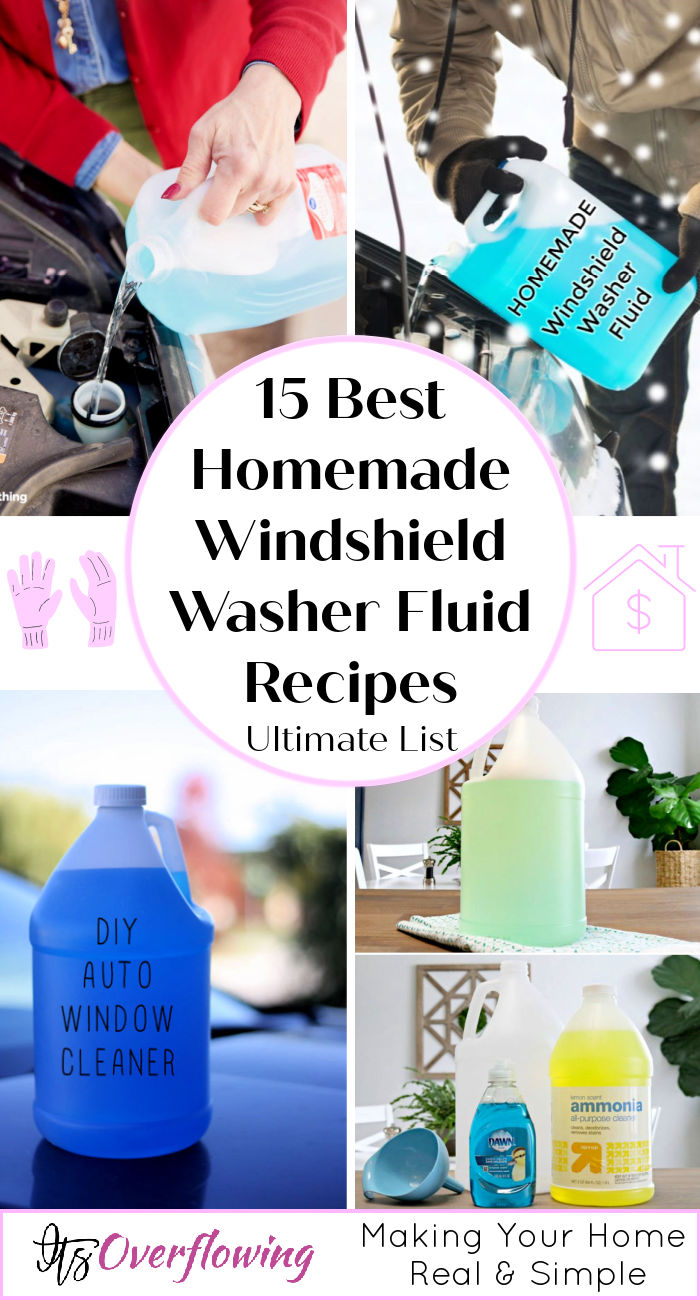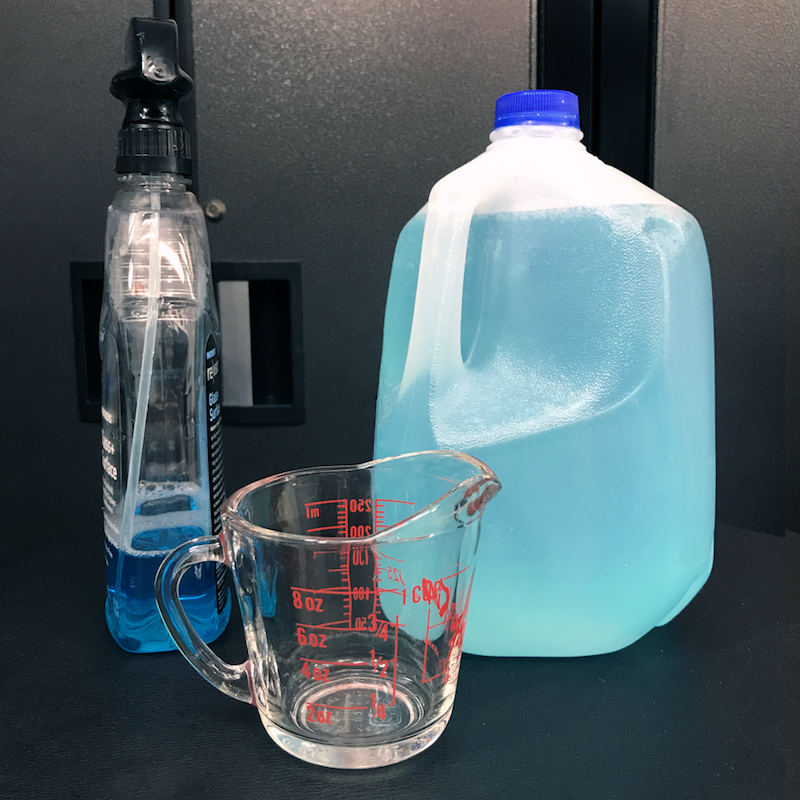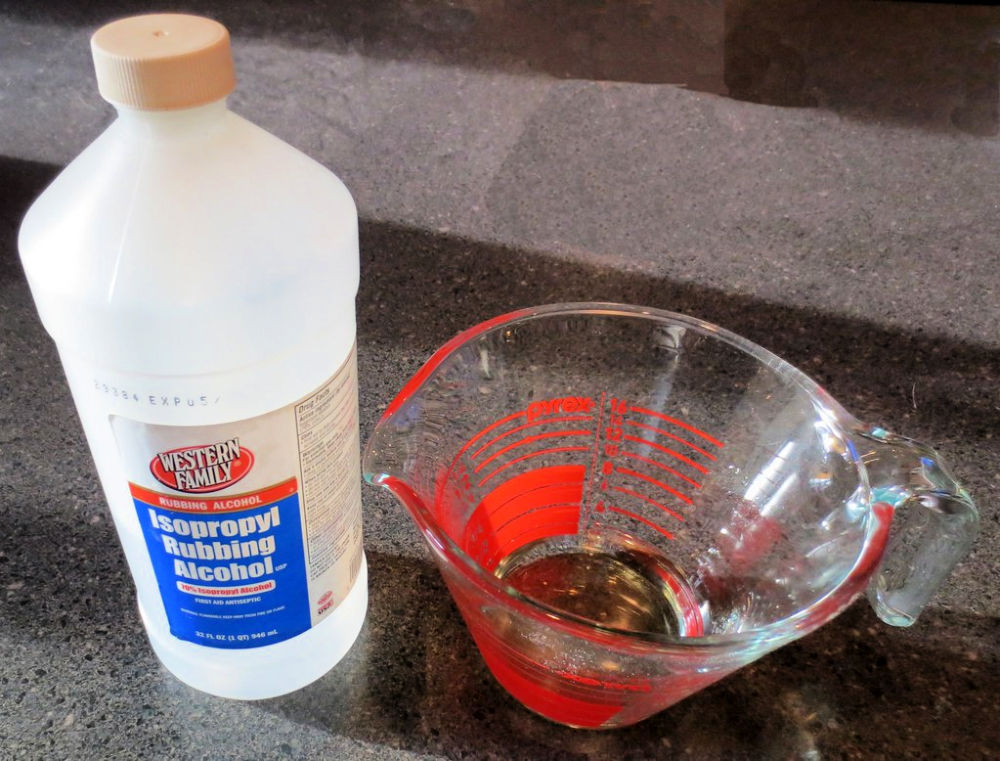Listen up, folks! If you're tired of spending your hard-earned cash on store-bought window washing fluid, we've got the ultimate solution for you right here. Making your own window washing fluid is easier than you think, and it's a game-changer for your cleaning routine. So, roll up your sleeves and let's dive into this DIY project that'll keep your windows sparkling clean without breaking the bank!
Now, before we get into the nitty-gritty, let's talk about why homemade window washing fluid is worth your time. Not only is it cost-effective, but it's also eco-friendly and customizable. You can tailor the solution to your specific needs and preferences, whether you're looking for something fragrance-free or super-strong for tough stains. Plus, who doesn't love the satisfaction of making something from scratch?
Before we jump into the steps, it's important to note that creating your own cleaning products requires a bit of research and caution. We'll guide you through everything you need to know to ensure your homemade window washing fluid is safe, effective, and ready to tackle any grime that comes its way. Let's get started!
Read also:Angelica Hernandez Rising Star In The Spotlight
Why Make Your Own Window Washing Fluid?
First things first, why bother making your own window washing fluid when you can just buy it at the store? Well, here's the thing—store-bought cleaners often come packed with harsh chemicals that aren't great for the environment or your health. Plus, they can be expensive, especially if you're cleaning large spaces like office windows or car windshields regularly.
By making your own, you gain control over the ingredients, ensuring they're safe for your family, pets, and the planet. And let's not forget the cost savings. A few simple ingredients from your pantry can go a long way, and you won't have to worry about running out of cleaner mid-clean.
Key Ingredients for DIY Window Washing Fluid
Here's the good news: you probably already have most of the ingredients you need for this project in your home. Let's break down the essentials:
- Vinegar: A natural powerhouse for cutting through grease and grime.
- Water: The ultimate solvent that works hand-in-hand with vinegar.
- Rubbing Alcohol: Optional but great for extra cleaning power.
- Essential Oils: For a pleasant scent if you're into that kind of thing.
These ingredients are not only affordable but also safe to use around kids and pets. Plus, they're eco-friendly, which is a win-win for everyone.
Step-by-Step Guide to Making Window Washing Fluid
Now that you've got your ingredients ready, let's walk through the process step by step:
Step 1: Gather your materials. You'll need a spray bottle, measuring cups, and a mixing bowl. Make sure everything is clean before you start.
Read also:Tribe Bikes Nyc Your Ultimate Guide To Urban Cycling Bliss
Step 2: Mix 1 cup of vinegar with 1 cup of water in your mixing bowl. This is your basic solution, but feel free to adjust the ratio depending on how strong you want the cleaner to be.
Step 3: If you're using rubbing alcohol, add 1/4 cup to the mixture. This will help with tougher stains and leave a streak-free finish.
Step 4: If you want a nice scent, add a few drops of your favorite essential oil. Lemon or peppermint are great options for a fresh, clean smell.
Step 5: Pour the mixture into your spray bottle and shake well before each use. And there you have it—your very own window washing fluid!
Tips for Best Results
Want to make sure your DIY window washing fluid works like a charm? Here are a few tips to keep in mind:
- Clean windows on a cloudy day to avoid streaks caused by the sun drying the solution too quickly.
- Use a microfiber cloth or newspaper for wiping to achieve a streak-free finish.
- Test the solution on a small, inconspicuous area first to ensure it doesn't damage the surface.
Customizing Your Window Washing Fluid
One of the best things about making your own window washing fluid is the ability to customize it to your liking. Here are a few ideas:
For Extra Strength
Add a tablespoon of baking soda to your mixture for an extra boost in cleaning power. This is especially useful for windows with stubborn dirt or grease.
For a Fragrant Finish
Experiment with different essential oils to create your perfect scent. Lavender for relaxation, eucalyptus for a fresh vibe, or even citrus blends for a zesty touch.
For Eco-Friendly Enthusiasts
Stick to biodegradable and non-toxic ingredients to ensure your cleaner is as green as possible. Avoid synthetic fragrances and stick to natural alternatives.
Cost Comparison: Store-Bought vs DIY
Let's talk numbers. On average, a bottle of store-bought window washing fluid can cost anywhere from $3 to $8, depending on the brand and size. Now, compare that to the cost of making your own:
- Vinegar: $2 for a large bottle
- Water: Virtually free
- Rubbing Alcohol: $3 for a small bottle
- Essential Oils: $5-$10 per bottle, but a little goes a long way
As you can see, making your own window washing fluid is not only cheaper but also more sustainable in the long run.
Safety Precautions
While homemade cleaners are generally safe, it's always a good idea to take some precautions:
- Store your cleaner in a clearly labeled container, especially if you have kids or pets around.
- Avoid mixing vinegar with bleach, as this can create harmful fumes.
- Always test your cleaner on a small area first to ensure it doesn't damage the surface.
Common Mistakes to Avoid
Here are a few mistakes to watch out for when making your own window washing fluid:
- Using too much vinegar, which can leave residue on some surfaces.
- Not shaking the bottle well before use, leading to uneven distribution of the solution.
- Skipping the testing phase and risking damage to delicate surfaces.
Environmental Benefits
By choosing to make your own window washing fluid, you're not only saving money but also helping the planet. Commercial cleaners often come in plastic packaging that contributes to waste. By using reusable spray bottles and natural ingredients, you're reducing your environmental footprint significantly.
Plus, many store-bought cleaners contain harmful chemicals that can pollute waterways when washed down the drain. Your homemade solution is free from these toxins, making it a safer choice for the environment.
Health Benefits of DIY Cleaners
Switching to homemade cleaning products can also have positive effects on your health. Many commercial cleaners contain volatile organic compounds (VOCs) that can irritate your eyes, nose, and throat. By using natural ingredients like vinegar and water, you're reducing your exposure to these harmful chemicals.
And let's not forget about allergies. If you or someone in your household has sensitive skin or respiratory issues, homemade cleaners are a safer alternative that won't trigger reactions.
Conclusion: Start Cleaning Like a Pro
There you have it, folks! Making your own window washing fluid is a simple, cost-effective, and eco-friendly way to keep your windows sparkling clean. With a few basic ingredients and a bit of effort, you can create a cleaner that's tailored to your needs and preferences.
So, what are you waiting for? Grab those ingredients and get started on your DIY cleaning journey. And don't forget to share your experience with us in the comments below. We'd love to hear how it turned out for you!
Table of Contents:
- Why Make Your Own Window Washing Fluid?
- Key Ingredients for DIY Window Washing Fluid
- Step-by-Step Guide to Making Window Washing Fluid
- Tips for Best Results
- Customizing Your Window Washing Fluid
- Cost Comparison: Store-Bought vs DIY
- Safety Precautions
- Environmental Benefits
- Health Benefits of DIY Cleaners
- Conclusion: Start Cleaning Like a Pro


